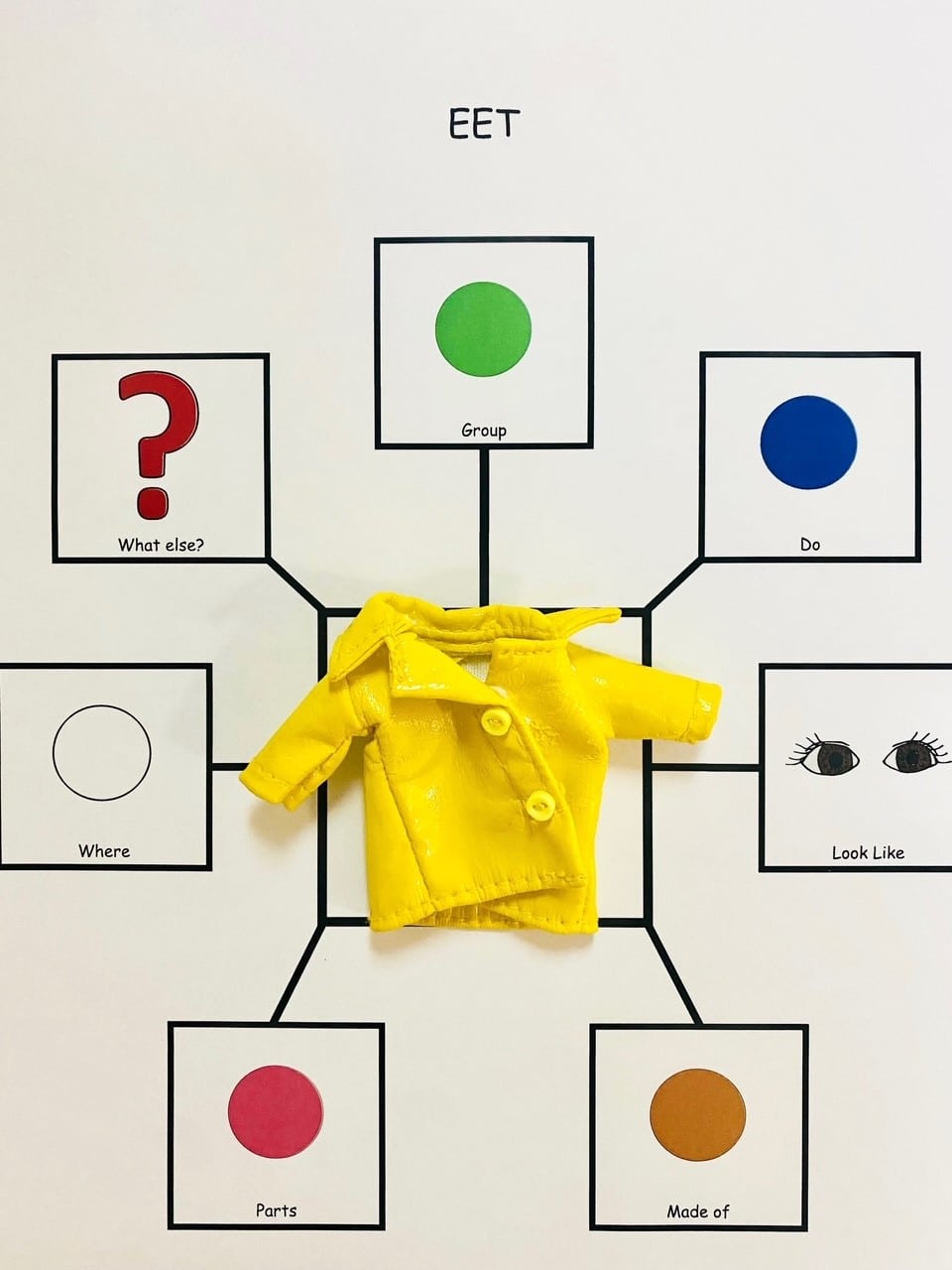What is the Expanding Expression Tool (EET)? EET is a tool that speech-language pathologists use to help: general description skills, oral expression, written expression, vocabulary comprehension, defining and describing, making associations, stating functions of objects, categorization and similarities and differences.

Pictured is an EET semantic map. A yellow rain coat is placed in the middle of the semantic map to help students have a visual model of the object the therapist wants the student to describe. Each section of the semantic map has its own visual, paired with a key word/phrase. Here are some ways to target describing ‘raincoat’ with your student/child:
🟢: ‘Green means group’
What group does the raincoat belong to? Animals? Clothing? Or transportation?
🔵: ‘Blue means do’
What does the raincoat do?
Does it keep our feet dry? Does it keep our body dry?
👀: ‘What does it look like?’
The raincoat is yellow and shiny.
🟤: ‘What is it made of?’
Is the raincoat made of plastic? Wood? Rubber material?
💗: ‘Pink means parts’
What parts does the raincoat have? Does it have legs? Buttons? Sleeves? Zippers?
⚪️: ‘White means where’
Where can you find a raincoat? The zoo? A coat closet? The grocery store?
❓: ‘What else do you know?’
Raincoats are worn when it’s wet and raining outside to keep our bodies clean, warm and dry. Raincoats can come in all different colors and patterns.
The EET tool has been shown to help students consistently describe and define objects in an organized manner. It has also been shown to improve expression and comprehension skills and can be used with students from preschool-high school.